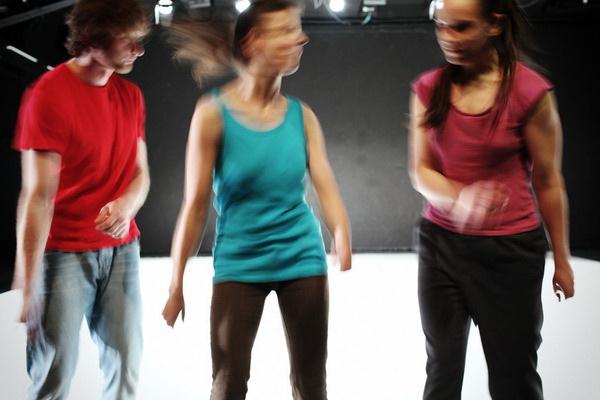
Fot.Paweł Grześ.

Fot.Paweł Grześ.
Rock dance tended to be exuberant and anarchically complex, while theatre dance was often pedestrian and minimal. The familiar joke summarized the situation: in the early 1960s people would go to a dance concert to watch people stand around, and afterwards everyone would go to a party and dance.
Cynthia J. Novack. Looking at movement as culture.
Ten spektakl jest o tańcu.
Ten spektakl jest o kulturze alternatywnej. Ten spektakl jest o modzie. Ten spektakl jest o indywidualizmie. Ten spektakl jest o zbiorowości. Ten spektakl jest o polityce ciała. Ten spektakl jest o estetyce. Ten spektakl jest o oporze. Ten spektakl jest o konformizmie. Ten spektakl jest o ekstazie. Ten spektakl jest o erotyce. Ten spektakl jest o historii. Ten spektakl jest o rytmie.Ten spektakl jest o wzorcach. Ten spektakl jest o rytuale. Ten spektakl jest o nowym porządku. Ten spektakl jest o nowym chaosie.
Ten spektakl jest o tańcu.
Wstęp bezpłatny.
Choreografia: Ramona Nagabczyńska (z dużym wkładem twórczym tancerzy)
Światła: Jan Cybis
Muzyka: NEU!, Nisennenmondai, Ścianka, David Bowie
Występują: Magdalena Jędra, Ramona Nagabczyńska, Konrad Szymański
Partnerzy: Fundacja Ciało/Umysł, Fundacja Burdąg, Komuna//Warszawa
Spektakl został zrealizowany dzięki stypendium Ministerstwa Kultury i Dziedzictwa Narodowego (MKiDN).
Miejsce: Centrum w Ruchu (Wawerska Strefa Kultury)
Jak dojechać: Stacja kolejki S1 i autobusu 521: PKP Międzylesie lub 525 (przystanek Pożaryskiego)